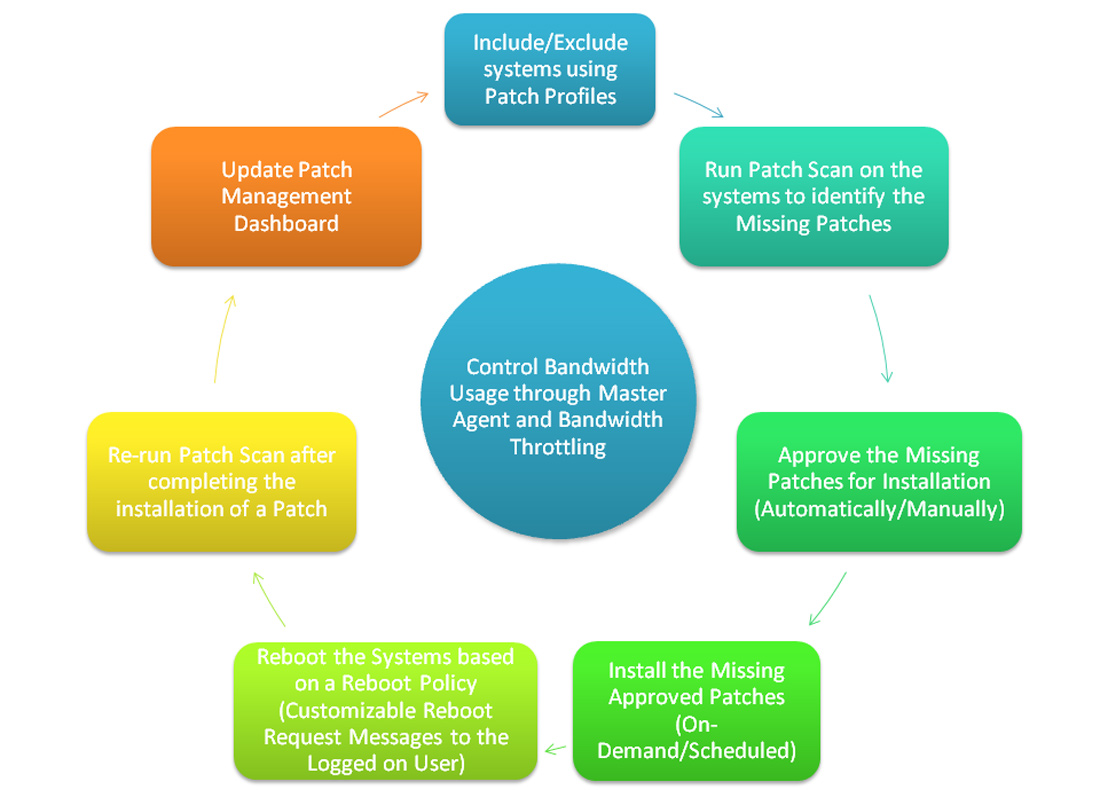Businesses are to stay updated with their systems’ applications and software with the latest patch releases to serve better security. Now the question is how to go about managing and updating patches efficiently?? Patch Management Software is the answer to address the same. However there is a range of patch management solutions available in the market – How do you choose the right patch management solution to match your requirements.
Some of Industry’s best Patch Management Systems are listed below
- Comodo One Patch Management Software
- Microsoft System Center Configuration Manager
- Symantec Patch Management Solution
- SolarWinds Patch Manager
- HEAT PatchLink
- Kaseya VSA
- Quest KACE
- ManageEngine Patch Manager Plus
- GFI LanGuard
The operating system, platform and application support
The most vital aspect is that patch management software should be compatible with the system’s operating systems and applications. Any business would refrain from purchasing and implementing a software that doesn’t support any of its existing platforms.
Selecting a patch management solution that supports your organization’s existing platforms or the platforms that are possibly going to be deployed in future is advisable. Most of the software vendors consider future-proofing that includes tablets, laptops, smartphones and so. However, there is no patch management software that can support desktop, server and mobile devices.
As much as possible, you should compare and select patch management software that either supports platforms your organization has deployed or those you will deploy. For most IT shops, this future-proofing is likely to include mobile platforms, including smartphones, tablets and other portable computing devices. If your requirements include patch management for mobile devices, keep in mind that there is still no single patch management tool that includes support for all common desktop, server, and mobile devices. as with mobile platforms, the user considers updating the entire app that comes up with new updates rather than updating patches.
The most sought-after Patch management software is from Comodo as it supports almost all the Oses – Windows, Linux and Unix variants. It also supports Windows and iOS-based mobile devices. Next, that comes in the line is Microsoft and Symantec Patch Management Software.
Integration with other systems management products
Any organization should choose a patch management software that could possibly integrate well with the systems management products. Integration with the organization’s infrastructure management software would mitigate system downtime. Comodo delivers framework-based patch management and monitoring tool.
Add-on features and Vendor Support
It is a key factor to check if the patch management software that an organization chooses, supports physical desktops and servers; virtual desktops and servers; and cloud-based computing. It is also important to understand as to how well the vendor supports their clients.
Understanding the vendor’s support system is challenging, nevertheless, it can be done when Proof of Concept (POC) testing is done. It is advisable to request the vendors for validation to call their support team during the Proof of Concept testing phase. Understanding how good is the expertise and the response time of the vendor’s support staff is vital to validate if the vendor’s software is right for your company.
Of all the mentioned patch management products that top the market, most of the patch management systems support cloud-based computers.
Cost
Other important criteria that come into consideration are the cost. Each patch management software differs by cost and features. A patch management software that is framework-based is more expensive. The cost differs in relevance to the licensing scheme as well.
Performance
Performance of any patch management software is gauged based on the features, cost of the software licenses and infrastructure that is required to run the software effectively. However, performance is not considered to be a prime factor for comparing patch management tools, as each vendor claims that their product performs better than the other. It can only be decided, only after performing a test of the patch management tools in the organization’s IT environment. Get free patch management tools, and get to know about the product during the free trial period, and only if it meets the organization’s demands by all the above-mentioned factors, subscribe for the paid version of the most appropriate patch management system.




